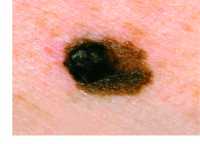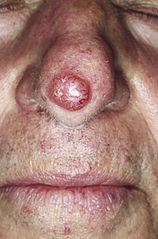TNFi Medications for Psoriasis Associated with Weight Gain
Payer Coverage for Genetic Testing of Cardiovascular Genes Varies by Insurer
 Nancy Niguidula, MS, DPH
Doctorate in Public Health in Toxicology
Ambry Genetics
MedicalResearch.com: What is the background for this study?
Response: The clinical presentations of many inherited cardiovascular conditions overlap; thus, genetic testing may clarify diagnoses, help with risk stratification, facilitate appropriate clinical management decisions, and aid in identifying asymptomatic, at-risk relatives. A large number of professional societies have developed practice guidelines and recommendations for genetic testing of cardiovascular diseases. These include international and collaborative expert panels that establish genetic screening and treatment recommendations by drawing on evidence-based medicine. To further strengthen the clinical utility of cardiovascular genetic testing, the American College of Medical Genetics and Genomics (ACMG) published a guideline for 59 genes with clinical actionability that should be reported if found on whole exome sequencing, even when unrelated to the testing indication.
(more…)
Nancy Niguidula, MS, DPH
Doctorate in Public Health in Toxicology
Ambry Genetics
MedicalResearch.com: What is the background for this study?
Response: The clinical presentations of many inherited cardiovascular conditions overlap; thus, genetic testing may clarify diagnoses, help with risk stratification, facilitate appropriate clinical management decisions, and aid in identifying asymptomatic, at-risk relatives. A large number of professional societies have developed practice guidelines and recommendations for genetic testing of cardiovascular diseases. These include international and collaborative expert panels that establish genetic screening and treatment recommendations by drawing on evidence-based medicine. To further strengthen the clinical utility of cardiovascular genetic testing, the American College of Medical Genetics and Genomics (ACMG) published a guideline for 59 genes with clinical actionability that should be reported if found on whole exome sequencing, even when unrelated to the testing indication.
(more…)Nanovaccine Opens New Approach to Melanoma Treatment
Football: One Season of Play Linked to Midbrain Damage, Even Without Concussion
- Are unable to tolerate the pain of conventional intra-lesional injection, as keloids are inherently hypersensitive. The problem is exacerbated by the fact that repeated monthly injections are required to achieve a response. In addition, children cannot tolerate pain and cannot undergo such injections.
- Have keloids on the mid facial region, where injection carries a risk of causing blindness.
- Are unable to afford the time and cost of repeated travelling to see a dermatology doctor or nurse for the injections. These include patients residing or working overseas.
- Have mid-sternum protrusive scars after cardiac arterial bypass surgery, and painful injections may trigger another heart attack.
Analystics Can Redesign Medicare Shared Savings Program To Save Money
Eat Chicken, Not Red Meat For Reduced Breast Cancer Risk
Depression Major Factor Behind Drug Use During Pregnancy
Medical, and Non-Medical, Buprenorphine Use Increases
Study Doubles Number of Genes Linked to Squamous and Basal Cell Skin Cancer
Smart Phone Camera May Be Able To Monitor Your Blood Pressure
Americans Still Exercising Too Little, Sitting Too Much
NIH Funded Research Still Lacks Full Ethnic Equity
No Link Found Between Coffee and Increased Cancer Risk
 Mr Jue Sheng Ong, PhD Student
QIMR Berghofer’s Statistical Genetics Group
MedicalResearch.com: What is the background for this study? Response: Previous findings have shown conflicting results on whether coffee is associated with cancer risk.
To evaluate whether there’s any evidence for a causal relationship between coffee and cancer outcomes, we performed two types of association analyses using data from the half a million participants in the UK.
Mr Jue Sheng Ong, PhD Student
QIMR Berghofer’s Statistical Genetics Group
MedicalResearch.com: What is the background for this study? Response: Previous findings have shown conflicting results on whether coffee is associated with cancer risk.
To evaluate whether there’s any evidence for a causal relationship between coffee and cancer outcomes, we performed two types of association analyses using data from the half a million participants in the UK.
- We first studied whether an individual’s self-reported coffee consumption is related to their overall risk of developing or dying from any cancers.
- Then, we repeated the analyses using genetically predicted coffee intake (using about 35 genetic markers related with coffee intake) instead of their self-reported consumption: a technique known as mendelian randomization which is commonly used in modern epidemiology to remove bias from environmental confounders.
Single Measurement of High-Sensitivity Troponin To Assess Myocardial Infarction Risk
Prostate Cancer: Effects of Hormone Therapy on Cognitive Function Addressed in Large Study
Music Makes High Intensity Exercise More Enjoyable
Woke Retroviruses May Trigger Multiple Sclerosis and ALS
Type 1 Diabetes in Children Alters Brain Growth and Function
Longer Antibiotic Treatment for Pneumonia Isn’t Always Better
New Research Opens Door To Growing New Teeth
 It was noted that the differentiation of the structures of the developing jaws is ahead of other divisions. The presence of chromophobic spindle-shaped cells migrating in the direction of the tooth rudiments and their location in the region surrounding the enamel organ indicates intercellular interactions in the development of teeth in humans that differ from these processes in lower vertebrates. At the present stage, it is known that ectomesenchyme is involved in cell assemblies participating in the development of dentin. (more…)
It was noted that the differentiation of the structures of the developing jaws is ahead of other divisions. The presence of chromophobic spindle-shaped cells migrating in the direction of the tooth rudiments and their location in the region surrounding the enamel organ indicates intercellular interactions in the development of teeth in humans that differ from these processes in lower vertebrates. At the present stage, it is known that ectomesenchyme is involved in cell assemblies participating in the development of dentin. (more…)Americans Support Gene Therapies Even If They Cost More

MedicalResearch.com Interview with:
Wayne Winegarden, Ph.D.
Director, Center for Medical Economics and Innovation
Pacific Research Institute
MedicalResearch.com: What is the background for this poll? Would you tell us a little about the Center for Medical Economics and Innovation?
Response: Recent press reports have focused on how extensive innovative gene therapies can be. PRI was interested in learning where Americans stand on these cures of the future, and commission a new national opinion survey to find out.
The Center for Medical Economics and Innovation is a new center launched by PRI this spring to research and advance policies showing how a thriving biomedical and pharmaceutical sector benefits both patients and economic growth. Medical innovation is an important driver of economic growth, responsible for over $1.3 trillion in economic activity each year. As the Milken Institute has found, every job in the biomedical sphere supports another 3.3 jobs elsewhere in the economy.
Among the activities of the Center – which can be accessed at www.medecon.org – are providing free-market analysis to evaluate current policy proposals, producing easy-to-understand data and analysis on current trends in medical science, breaking down complex issues like pharmaceutical and biomedical pricing structures, and demonstrating the benefits that market-based reforms can offer patients and the U.S. health care system. (more…)




























